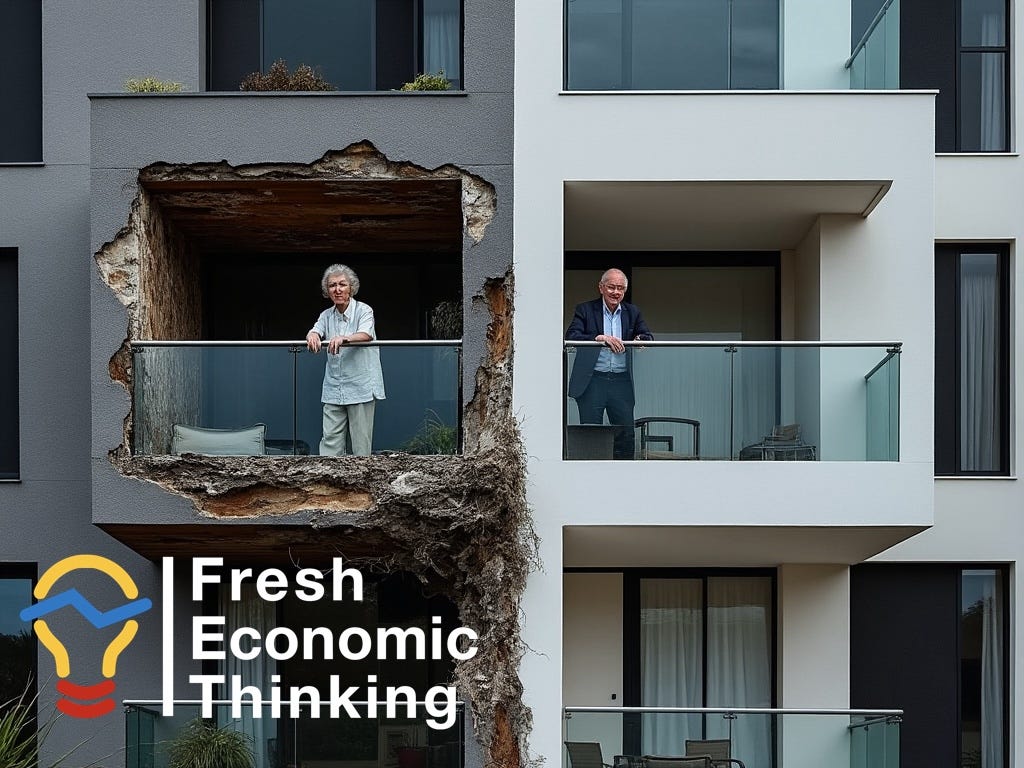High-rise apartments are BAD FOR RETIREMENT and BUILD-TO-RENT apartments will become POPULAR in Australia without new tax breaks
Incentives and risk allocation are why
Australia seems very good at building apartments.
But we aren’t as good as many think.
The past two decades have seen a major shift in the composition of new housing in Australia towards large apartment buildings, as you can see below. However, two big risks arise in large apartment buildings that limit their attractiveness to individual investors.
First, are construction risks. We have seen a wave of buildings with enormously costly defects (such as Opal and Mascot Towers) and many more with unexpected defects that have cost apartment owners tens of thousands of dollars (or more) each. These risks are ultimately held by new apartment owners despite various systems of building warranties and insurance.
Second are the management risks. Large complex buildings need reasonably sophisticated and informed management. Often management rights are separately owned, and the incentives of the owner of the management rights may not align with the interests of the owners. For example, sometimes management rights are held by building developers as a way to hide defects from owners until building warranties expire.
Apartment development in Australia today typically involves four entities that each would like to pass risks to the other, and hence have limited collective incentives to operate in the long-term interests of strata owners.
Developer
Builder
Body corporate manager
Strata owner
Four Corners has investigated both aspects of apartment owner risk in their shoddy apartment construction and strata management programs.
For strata owners, it is difficult to understand or estimate these risks upfront. Whether you have bought in a good building or a disaster can only be discovered after many years, and when you buy sellers have no incentive to inform you.
The trouble is that each entity was to push risks onto the others.
Along the development path incentives push towards buildings that are flashy and saleable off-the-plan and in the first years, but don’t push towards low ongoing maintenance costs, leaving owners with many surprises.
A rise in legal issues over building defects from the 2010s apartment boom led the New South Wales government to conduct a survey of building defects. The political fallout is likely to result in further policy changes to establish better allocation of risk and quality controls.
Build-to-rent companies take on more roles in development and management, sometimes even building the dwellings and rolling the four different groups into one entity, taking all risks and all rewards while removing conflicts where each party tries to push risk onto the other.
This approach to risk is common in other sectors of the economy. Companies that need complex and specialist capital equipment will often try and make it in-house, as there are risks from being dependent on others for supplying niche capital goods. Suppliers end up with the power to push risks and costs (such as extortionary conditions for repairs and maintenance) onto them.
These risks and the difficult incentive problems are why I argue below that:
Apartments in large buildings are a bad financial choice for pensioners, and
Build-to-rent apartments will be much more popular in the next property cycle.
Pensioners will want detached homes
Pensioners are the least able to deal with apartment risks relative to those of a detached home.
In a detached home, new building defect risks are typically more limited in their potential costs and they are easier to spot with a building inspection.
And even if defects arise, you can choose to live with them. In a large apartment complex, you must contribute your share of the costs even if you can live with the damage.
This is a broader point.
Keep reading with a 7-day free trial
Subscribe to Fresh Economic Thinking to keep reading this post and get 7 days of free access to the full post archives.



